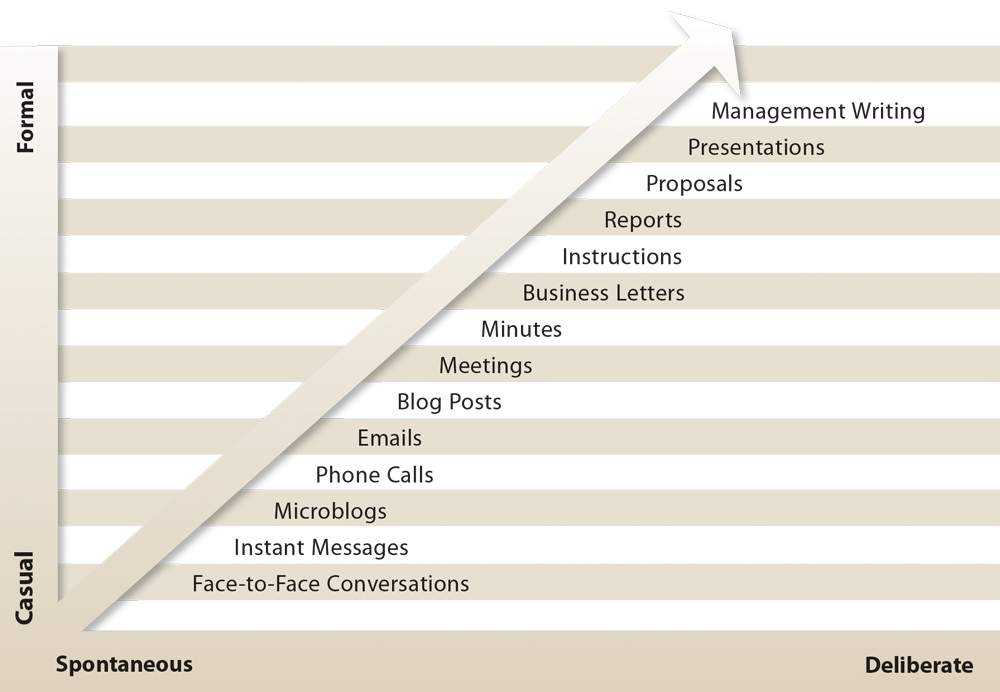12
Communication Options
Imagine you need to make an important change to a project or procedure. How would you get your point across? Would you write a note, send an email, fill out a request? Would you deliver the information in person or on the phone? Now, imagine you need to lay someone off. Would you deliver the information in the same way?
Each communication situation calls for a specific medium of communication. These days, businesspeople have hundreds of options: phone calls, emails, instant messages, blog posts, social-media pages, webinars, letters, memos, reports, and so on. Each medium has its own strengths and weaknesses—and its best uses. It’s important to choose a medium that matches the communication situation.
This chapter provides guidelines to help you select a medium of communication that will best get your message across.
In this chapter
Analyzing the Communication Situation
The communication situation includes five elements:
1. Sender:
|
|
2. Message:
|
|
3. Medium:
|
|
4. Receiver:
|
|
5. Context:
|
When choosing a medium, you have many communication options. The medium should match your needs and those of the message, receiver, and context. The chart that follows can help you choose the best medium.
Understanding the Medium
The options for communicating lie along a continuum from quick, informal types to deliberate and formal types. The following chart shows these differences.
The Continuum of Communication

Choose a Medium
To select an appropriate medium for your message, do the following:
-
Put your finger down on the medium that you think might be most appropriate.
-
Consider the options just above your finger and just below it.
-
Move down and to the left if you need a faster, more casual medium.
-
Move up and to the right if you need a more deliberate and formal medium.
When you choose a medium, think also about these factors: effectiveness, speed, permanence, privacy, formality, and precedence.
Matching Medium to Message
As you select a medium of communication, keep the following pros and cons in mind.
Casual, Spontaneous Options (Face-to-Face Conversations, Text Messages, Social Media Posts, Phone Calls)
PRO |
CON |
|
These options are fast and convenient, and they allow a quick exchange of information back and forth. They are interactive and work well for brainstorming and decision making. For example, texting someone to meet for lunch may be better than emailing the person. |
These options are in the moment, which means you do not have time to think carefully about issues. For that reason, these options work best for minor or everyday subjects. Also these options may not preserve a permanent record of what was said. |
Semiformal, Moderate Options (Email, Blog Posts, Meetings, Minutes, Business Letters)
PRO |
CON |
|
These options are common, day-to-day types of communication suitable for most business applications. |
Though these options may seem casual, they do leave permanent records (for example, meeting minutes). So, they require a bit more time and care. |
Formal, Deliberate Options (Management Writing, Presentations, Proposals, Reports, Instructions)
PRO |
CON |
|
These options show your best thinking. Because you have taken care as you create these types of writing, they carry the most weight. They are also most likely to be published, read by a wide audience, and preserved. |
These options take work. They require focus and commitment, and they are judged most strongly because they are expected to be very well created. |